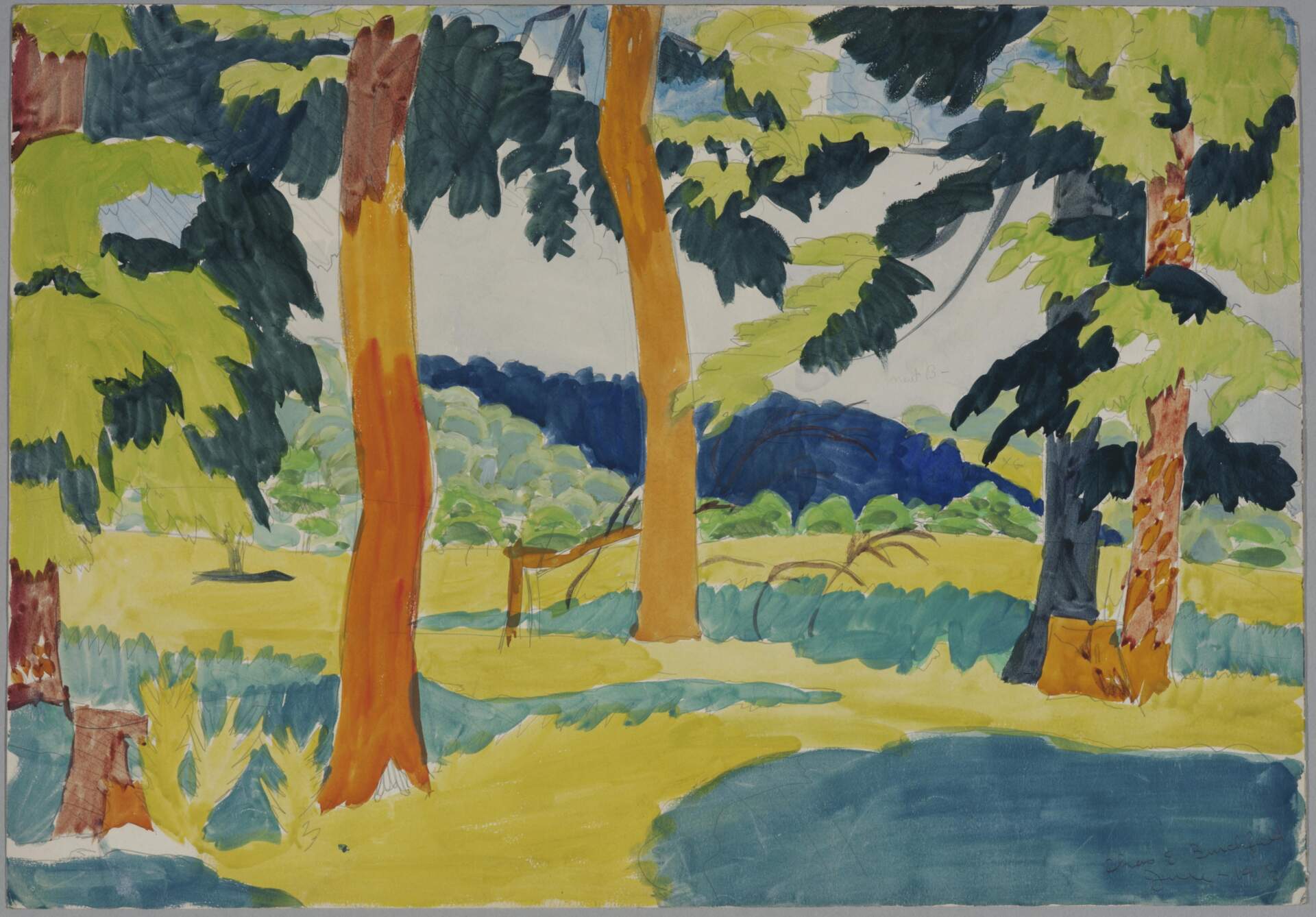Charles E. Burchfield (1893-1967)Trees and Fields, Noon Sunlight
June 1915
Transparent and opaque watercolor with graphite on white paper
13-7/8 x 20 inches
Munson Museum of Art, Edward W. Root Bequest, 57.107
Sensing that he “was destined to be an artist,” Burchfield “devised a simple formula” in 1915 for laying color over a graphite drawing for his watercolors, that he called his “primary color period” in which:
Everything was reduced to the twelve colors of the color wheel, plus black and white, with minimum modifications. Thus sunlit earth would be orange; shadows on it, red-violet; sunlit grass, yellow; shadows, blue or blue-green and so on. They were executed in flat pattern with little or no evidence of a third dimension.
As the “true beginning” of his career, he said 1915 was “the year that ideas came to me which were to haunt me the rest of my life.” Using “early modernist” strategies, he embodied scenes as he experienced them, such as this example from June 20th:
I remember the wind blowing thru the sun glittered trees—, meadowlarks singing— long black shadows crawling out towards the gold yellow sunlit eastern trees & fields– how the horizon sun boiled in a whirling mass of yellow light big trees bending in the wind– how shadows crawled up over wind-rippled wheat– brilliant orange tree-trunks–
